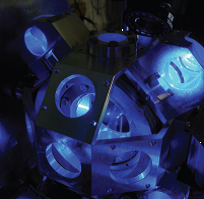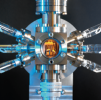News & Events
*** Featured ***Hyper-precise atomic clocks face off to redefine time
The 4 June 2015 edition of Nature includes a news article, 'Hyper-precise atomic clocks face off to redefine time', which describes how our project consortium is using a broadband two-way satellite time and frequency transfer link to compare optical clocks at INRIM, LNE-SYRTE, NPL and PTB. Comparison exercises such as this are needed to build confidence in the new generation of optical clocks by validating their performance levels, to anchor their frequencies to the present definition of the second with the lowest possible uncertainty, and to establish the leading contenders for a new definition of the second. SIB55 coordinator Helen Margolis, NPL, and project partner Fritz Riehle, PTB, are quoted in the article. You can read the Nature article here |
Paper published in Nature Communications
The gravity measurements and modelling performed within the ITOC project were used to derive the gravitational redshift corrections applied in the first international clock comparison performed over an optical fibre link. This has recently been published in Nature Communications.
Proceedings of the 8th Symposium on Frequency Standards and Metrology
Four papers from members of the ITOC project consortium appear in the Proceedings of the 8tht Symposium on Frequency Standards and Metrology, which have just been published in the peer-reviewed Journal of Physics: Conference Series:
- L. De Sarlo, M. Favier, R. Tyumenev and S. Bize, A mercury optical lattice clock at LNE-SYRTE, Journal of Physics: Conference Series 723, 012017 (2016)
- S. Vogt, S. Häfner, J. Grotti, S. Koller, A. Al-Masoudi, U. Sterr and C. Lisdat, A transportable optical lattice clock, Journal of Physics: Conference Series 723, 012020 (2016)
- P. Gill, Is the time right for a redefinition of the second by optical atomic clocks?, Journal of Physics: Conference Series 723, 012053 (2016)
- H. S. Margolis and P. Gill, Determination of optimized frequency and frequency ratio values from over-determined sets of clock comparison data, Journal of Physics: Conference Series 723, 012060 (2016)
Paper published in Optica
PTB has published a paper in Optica: Realization of a timescale with an accurate optical lattice clock, authored by Christian Grebing, Ali Al-Masoudi, Sören Dörscher, Sebastian Häfner, Vladislav Gerginov, Stefan Weyers, Burghard Lipphardt, Fritz Riehle, Uwe Sterr and Christian Lisdat.
This paper shows how a timescale based on an optical clock can be established that is superior to one based on even the best caesium fountain clocks, despite the limited reliability of optical clocks which makes a continuous realization of a timescale impractical.
ITOC final workshop
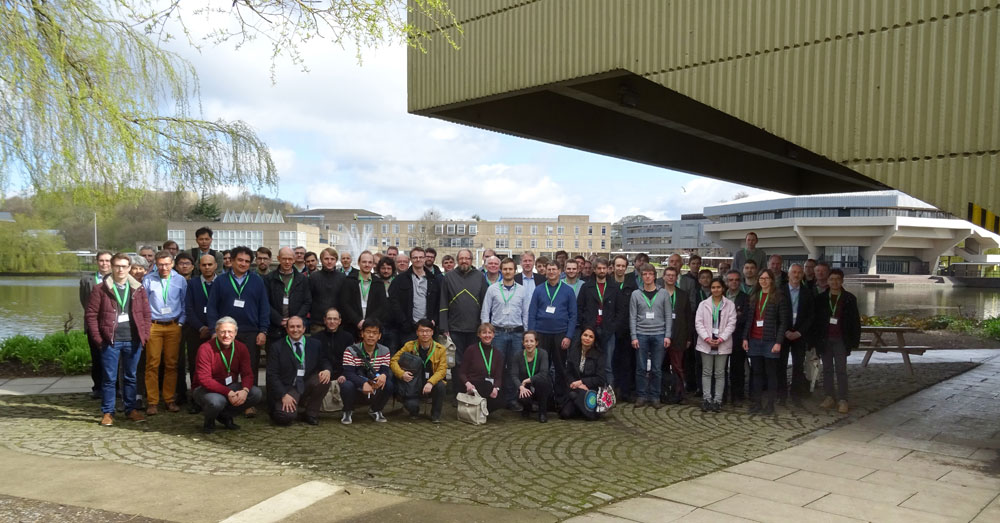 A final international workshop on 'Optical clocks: quantum engineering and international timekeeping' was organised in cooperation with the QESOCAS project consortium. This was held on Friday 8 April 2016 at the University of York, UK, in association with EFTF 2016, and was attended by more than 70 participants.
A final international workshop on 'Optical clocks: quantum engineering and international timekeeping' was organised in cooperation with the QESOCAS project consortium. This was held on Friday 8 April 2016 at the University of York, UK, in association with EFTF 2016, and was attended by more than 70 participants.
The workshop opened with two invited talks from leading experts in the field, including one focussing on a future redefinition of the second. This talk, given by Fritz Riehle from PTB, summarised achievements made with optical clocks to date and discussed the remaining challenges that still need to be addressed before a redefinition can occur.
The invited talks were followed by presentations from members of the two project consortia. For the ITOC project, an overview of the work undertaken was given by the project coordinator, Helen Margolis from NPL, who summarised the main goals of the project and the results achieved. A further talk, given by Franziska Riedel from PTB, described the campaign performed in June 2015 to compare optical clocks at INRIM, NPL, OBSPARIS and PTB via a broadband two-way satellite time and frequency transfer link.
Other results from the project were presented in eight posters during the afternoon session, providing a forum for detailed discussions between consortium members and stakeholders.
The ITOC-related presentations given at the workshop are available here.
EFTF 2016
Members of the project consortium presented various papers at this event, which was held at the University of York, UK, from 4–7 April 2016.
Transportable optical clock used in first demonstration of its kind
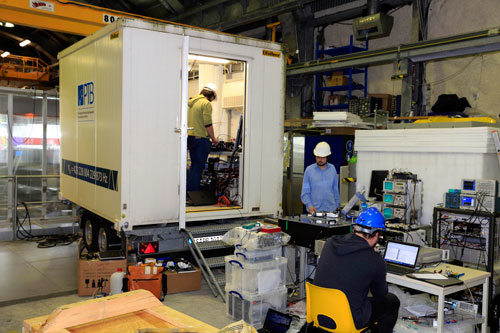 PTB have developed a transportable strontium optical lattice clock, opening up a new way of performing comparisons between clocks developed in different laboratories. The recent operation of this clock in a remote site is the first demonstration of its kind and its performance has surpassed that of the best previously-reported transportable frequency standard (the transportable caesium fountain developed by OBSPARIS).
PTB have developed a transportable strontium optical lattice clock, opening up a new way of performing comparisons between clocks developed in different laboratories. The recent operation of this clock in a remote site is the first demonstration of its kind and its performance has surpassed that of the best previously-reported transportable frequency standard (the transportable caesium fountain developed by OBSPARIS).
The tests performed within this project have enabled critical components in the setup to be identified, and updates of the hardware based on this evaluation will make the setup a reliable and robust measurement device. In fact, the first updates implemented for a second test at a remote site confirm these expectations.
Paper published in Physical Review A
PTB have published a paper in Physical Review A: Noise and instability of an optical lattice clock, authored by Ali Al-Masoudi, Sören Dörscher, Sebastian Häfner, Uwe Sterr and Christian Lisdat. This presents an analysis of the different types of noise from the detection and interrogation laser in the PTB strontium optical lattice clock.
ITOC 30-month review meeting
The 30-month review meeting for the ITOC project was held at INRIM in Turin from 26–27 November 2015. This provided an opportunity for the consortium to discuss the preliminary analysis of data from the broadband TWSTFT optical clock comparison experiment. A short workshop on the GPS PPP technique was also held in conjunction with the review meeting.
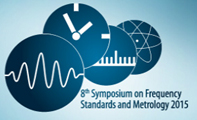 8th Symposium of Frequency Standards and Metrology 2015
8th Symposium of Frequency Standards and Metrology 2015
Potsdam, Germany, 12-16 October 2015
Various papers were presented at this event by the project consortium.
Three papers published in Metrologia
Three papers from our project consortium have now been published in Metrologia:
- J. Geršl, P. Delva, P. Wolf, Relativistic corrections for time and frequency transfer in optical fibres, Metrologia, 52, pp 552-564 (2015)
- E. Benkler, C. Lisdat, U. Sterr, On the relation between uncertainties of weighted frequency averages and the various types of Allan deviations, Metrologia, 52, pp 565-574 (2015)
- H. S. Margolis, P. Gill, Least-squares analysis of clock comparison data to deduce optimized frequency and frequency ratio values, Metrologia, 52, pp 628-634 (2015)
ITOC Summer School 2015
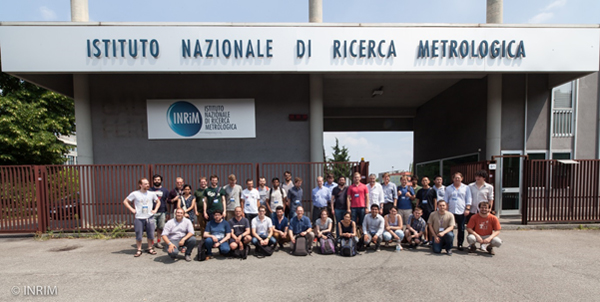
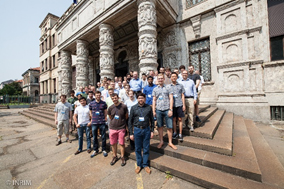 33 students, including several from outside Europe, attended the first School on Optical Clocks, hosted by INRIM from 29 June - 3 July 2015 and organised by the ITOC consortium in collaboration with the FACT Initial Training Network. The lectures were given by leading experts from the European metrology institutions involved in the ITOC project and by invited speakers from all over the world, and covered a comprehensive range of topics relating to optical frequency standards and metrology. Feedback about the school from both lecturers and students has been very positive.
33 students, including several from outside Europe, attended the first School on Optical Clocks, hosted by INRIM from 29 June - 3 July 2015 and organised by the ITOC consortium in collaboration with the FACT Initial Training Network. The lectures were given by leading experts from the European metrology institutions involved in the ITOC project and by invited speakers from all over the world, and covered a comprehensive range of topics relating to optical frequency standards and metrology. Feedback about the school from both lecturers and students has been very positive.
26th International Union of Geodesy and Geophysics (IUGG) General Assembly
Four posters describing the work carried out within the ITOC project were presented at this event, which was held in Prague from 22 June - 2 July 2015:
- H. Denker, L. Timmen, C. Voigt: Gravity field modelling for optical clock comparisons
- C. Voigt, H. Denker, L. Timmen: Investigation of time-variable components of the gravity potential for optical clock comparisons
- H. Denker: A new European Gravimetric (Quasi)Geoid EGG2015
- H. S. Margolis, E. Benkler, D. Calonico, H. Denker, P. Delva, R. M. Godun, C. Lisdat, J. Gersl, M. Merimaa and members of the ITOC consortium: International Timescales with Optical Clocks
ITOC 24-month review meeting
The 24-month review meeting for the EMRP project 'International Timescales with Optical Clocks' (ITOC) was held at CMI, Prague on 18-19 May. This was attended by 12 scientists from the partners involved in the project (NPL, CMI, INRIM, MIKES, LNE, OBSPARIS, PTB and the University of Hannover).
A major topic of discussion during the meeting was the optical clock comparison campaign scheduled for June 2015, which will use a broadband two-way satellite time and frequency transfer (TWSTFT) link to compare optical clocks at INRIM, LNE-SYRTE, NPL and PTB.
Paper published in Optics Letters
PTB has published a paper in Optics Letters: 8 × 10-17 fractional laser frequency instability with a long room-temperature cavity authored by S. Häfner, S. Falke, C. Grebing, S. Vogt, T. Legero, M- Merimaa, C. Lisdat and U. Sterr. This paper describes an ultra-stable laser system based on a 48 cm long optical glass resonator.
IFCS-EFTF 2015
Many members of the ITOC consortium attended this event, which was held in Denver, Colorado, from 12-16 April 2015. There were seven presentations given by the consortium.
Two were talks:
- F. Riedel, E. Benkler, J. Leute, D. Piester, J. Achkar, P. Delva, D. Rovera, I. Sesia, G. Cerretto, P. Defraigne, S. Shemar, P.B. Whibberley, and H.S. Margolis: Broadband two-way satellite link performance for optical clock comparison
- Al-Masoudi, S. Dörscher, S. Häfner, C. Grebing, V. Gerginov, S. Weyers, B. Lipphardt, F. Riehle, U. Sterr, C. Lisdat: Frequency measurement of an optical clock with 4×10-16 uncertainty assisted by an H-maser as flywheel oscillator
whilst the other five were posters:
- H. S. Margolis, E. Benkler, D. Calonico, H. Denker, P. Delva, R. M. Godun, C. Lisdat, M. Abgrall, J. Achkar, G. P. Barwood, S. Bize, J. Gersl, P. Gill, J. Guéna, G. Huang, L. A. M. Johnson, J. M. Jones, S. A. King, H. A. Klein, Y. Le Coq, R. Le Targat, T. Lindvall, J. Lodewyck, M. Merimaa, D. Nicolodi, P. B. R. Nisbet-Jones, M. Pizzocaro, D. Piester, F. Riedel, J.-L. Robyr, P. Rosenbusch, D. Rovera, I. Sesia, S. L. Shemar, C. Shi, U. Sterr, K. Szymaniec, L. Timmen, S. Vogt, C. Voigt, A. E. Wallin, S. Weyers and P. B. Whibberley: International Timescales with Optical Clocks
- G. Signorile and P. Tavella: Impact of dead time of measurement on frequency estimate and uncertainty
- C. Clivati, M. Frittelli, A. Mura, F. Levi and D. Calonico: An optical fibre link for the remote comparison of optical clocks and geodesy experiments
- M. Pizzocaro, F. Bregolin, G. Milani, B. Rauf; P. Thoumany, G. A. Costanzo, F. Levi and D. Calonico: Ytterbium optical lattice clock at INRIM
- C. Grebing, F. Riehle, C. Lisdat, U. Sterr: Reducing the statistical uncertainty of clock com-parisons by stable flywheel oscillators
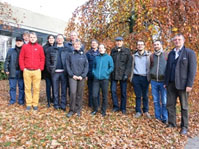 ITOC 18-month review meeting
ITOC 18-month review meeting
The 18-month review meeting for the ITOC project was held at PTB Braunschweig, 26-27 November 2014. This provided a first opportunity to discuss the results from the one-week link test for the broadband TWSTFT experiment.
Paper published in Applied Optics
INRIM has published a paper in Applied Optics on 'Efficient frequency doubling at 399 nm', authored by Marco Pizzocaro, Davide Calonico, Pablo Cancio Pastor, Jacopo Catani, Giovanni A. Costanzo, Filippo Levi, and Luca Lorini. This paper describes their development of a reliable, high-power and narrow-linewidth laser source for cooling and trapping of ytterbium atoms.
Gravity observations at and around the optical clock comparison sites
Within the framework of the REG, spot check gravity observations are being performed at and around each relevant clock comparison site in order to validate and improve the existing gravity database, with the final goal of upgrading the recent European gravity field model EGG2008 (European Gravimetric Quasigeoid 2008).
Read more about the results from these measurement campaigns.
New collaborator
A new collaborator, TimeTech GmbH, has joined the project and will provide support to the broadband TWSTFT (two way satellite time and frequency transfer) experiment being carried out within WP5: Remote clock comparisons via satellite links and analysis for timescale steering
EFTF 2014
Many members of the ITOC consortium attended this event, which was held in Neuchâtel, Switzerland, on 23-26 June 2014. There were four presentations given by the consortium:
- S. L. Shemar, P. Delva and A. Lamb: Practical evaluation of relativistic effects in two way satellite time and frequency transfer
- F. Riedel. E. Benkler, D. Piester: SATRE modem performance characterisation for 20 Mcps TWSTFT optical clock comparisons
- H. S. Margolis and P. Gill: Least-squares analysis of clock comparison to deduce optimised frequency and frequency ratio values
- J. Gersl, P. Delva and P. Wolf: Relativistic corrections for time and frequency transfer in optical fibres
For more information see the conference website.
Two new collaborators
Two new collaborators have recently joined the project:
The Politecnico di Torino has participated in the geodetic characterisation of the areas around ISM and INRIM.
The Observatoire Royal de Belgique will support the project by performing an independent analysis of the GPS PPP data collected during the broadband TWSTFT experiment.
ITOC 12-month review meeting
The 12-month review meeting for the ITOC project was held at MIKES on 13 and 14 May 2014. It was attended by 14 scientists from the partners involved in the project.
Secondment from Metrology Institute of Bosnia and Herzegovina (IMBiH) to the National Physical Laboratory (NPL), UK
Osman Sibonjic from IMBiH has recently completed a 15-week secondment to NPL. This collaboration with the ITOC consortium is providing IMBiH with access to expertise that will help them in the development of a national laboratory for time and frequency in Bosnia and Herzegovina.
Timekeepers of the future: Commentary article in Nature Physics
The February 2014 edition of Nature Physics includes a commentary article on the future of atomic timekeeping by the JRP co-ordinator, Helen Margolis.
This article describes how the performance of the best optical atomic clocks is now surpassing that of current microwave primary standards, raising the prospect of a future redefinition of the second. The remaining challenges to be addressed before this can happen are discussed, along with some examples of how certain applications can benefit from the extremely high precision of optical clocks even without redefining the second.
Clock-based geodesy at LSM
A news story about our proof-of-principle clock-based geodesy experiment has been published on the LSM website.
Gravity measurement campaigns for LSM and INRIM completed
The planned gravity measurement campaigns around the INRIM and LSM sites have now been completed. These will provide important input for the proof-of-principle clock-based geodesy experiment planned in WP4.
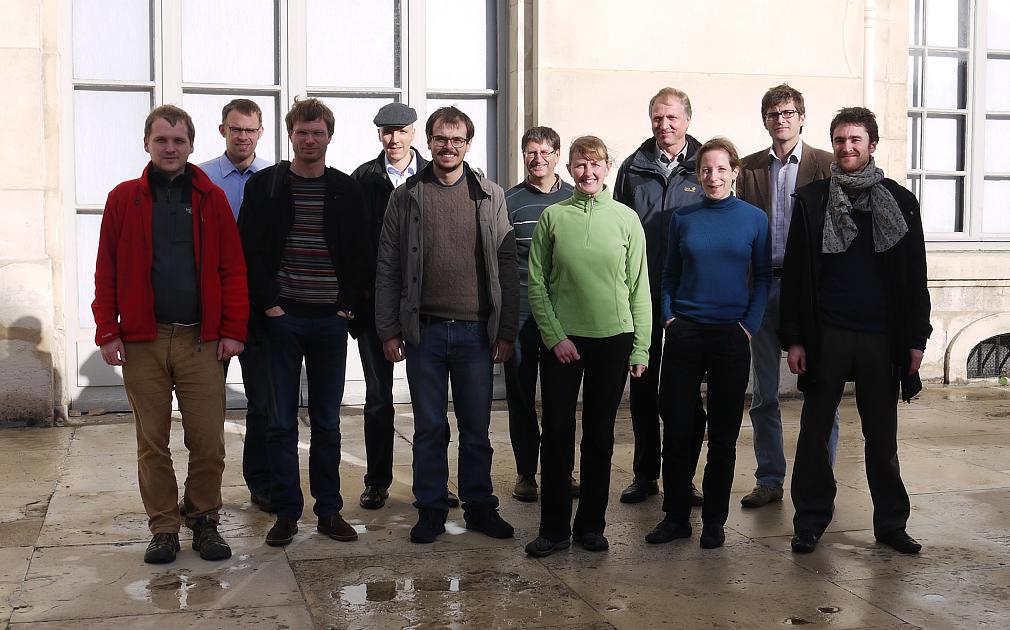 ITOC six-month review meeting
ITOC six-month review meeting
The six-month review meeting for the ITOC project was held at the Observatoire de Paris on 5 and 6 November 2013. This was attended by 15 scientists from the partners involved in the project.
New Researcher Mobility Grant
Congratulations to Jan Gersl from CMI, who submitted a successful application for a Researcher Mobility Grant in the 2013 call. This grant will enable Jan to spend two months at OBSPARIS, where he will apply relativistic theories of signal transfer over optical fibres to recently funded links between OBSPARIS, NPL and PTB.
IAG Scientific Assembly 2013
A poster describing the aims of the ITOC project was presented at the IAG Scientific Assembly, held in Postdam from 1-6 September 2013.
2013 Joint UFFC, EFTF and PFM Symposium
A poster describing the aims of the ITOC project was presented at the 2013 Joint UFFC, EFTF and PFM Symposium, held in Prague from 21-25 July 2013.
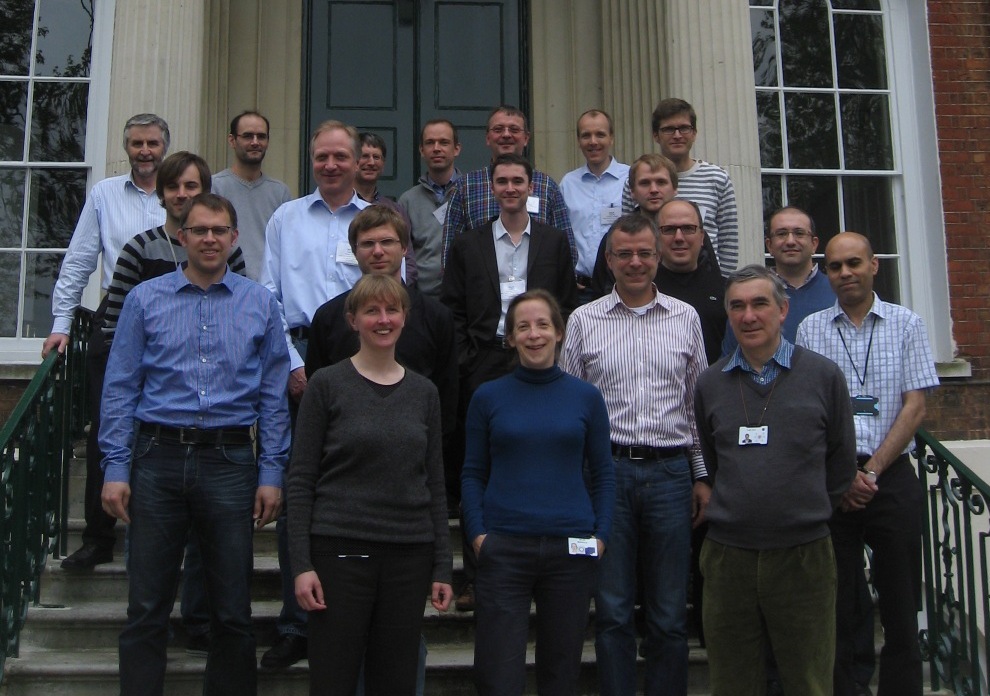 ITOC kick-off meeting held at NPL
ITOC kick-off meeting held at NPL
The kick-off meeting for the ITOC project was held at NPL on 29 and 30 May 2013.
This was attended by 13 representatives from the other partners involved in the project (CMI, INRIM, MIKES, LNE, OSBPARIS, PTB and LUH) as well as seven NPL scientists.

The research within this EURAMET joint research project receives funding from the European Community's Seventh Framework Programme, ERA-NET Plus, under Grant Agreement No. 217257.
